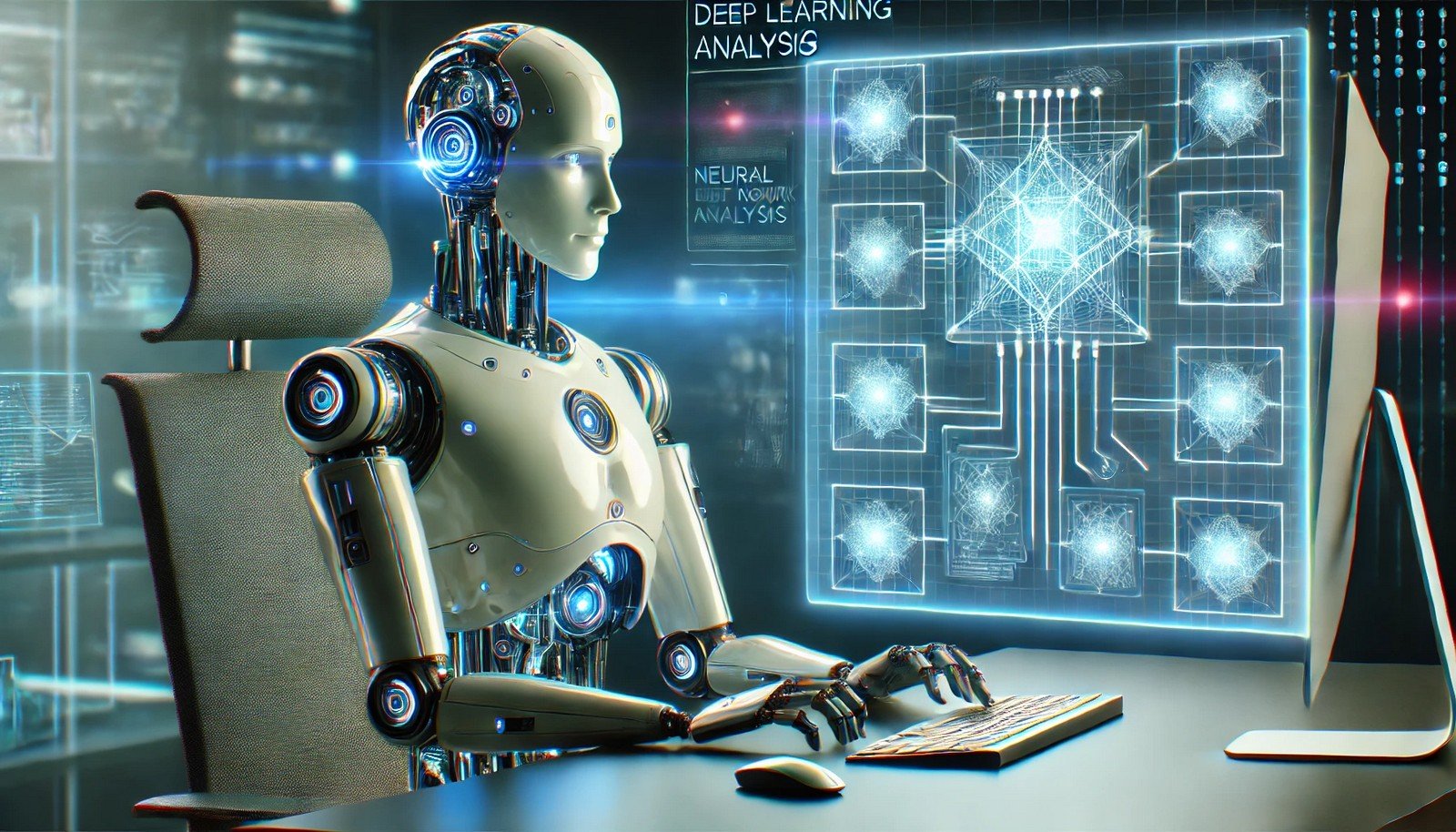Deep Learning (DL)

Quick Navigation:
- Deep Learning Definition
- Deep Learning Explained Easy
- Deep Learning Origin
- Deep Learning Etymology
- Deep Learning Usage Trends
- Deep Learning Usage
- Deep Learning Examples in Context
- Deep Learning FAQ
- Deep Learning Related Words
Deep Learning Definition
Deep Learning is a subset of machine learning within artificial intelligence (AI) that uses neural networks with three or more layers. These neural networks attempt to simulate the behavior of the human brain—albeit far from matching its ability—enabling it to learn from vast amounts of data. Deep learning algorithms are capable of automatically extracting high-level features from raw input data without manual feature engineering, making them particularly powerful for tasks like image and speech recognition, natural language processing, and autonomous systems.
Deep Learning Explained Easy
Imagine teaching a child to recognize different animals. You show them thousands of pictures of cats, dogs, and birds. Over time, they learn to spot which one is which based on patterns—furry ears for cats, wagging tails for dogs, wings for birds. Deep learning works similarly. It’s a kind of computer brain that looks at millions of pictures or sounds and figures out how to identify them without anyone specifically telling it what to look for.
Deep Learning Origin
Deep learning originated from early neural network research in the 1950s and 1960s, which attempted to simulate the learning process of the human brain. However, due to technological limitations and the complexity of computations, it was not widely adopted until advancements in computer hardware, data availability, and algorithm improvements in the 2000s. The development of powerful GPUs and large-scale datasets like ImageNet significantly boosted its growth.
Deep Learning Etymology
The term “deep” refers to the multiple layers in neural networks, as opposed to shallow learning structures with only one or two layers.
Deep Learning Usage Trends
The use of deep learning has seen exponential growth since the early 2010s. It has become a central technology in various applications, from virtual assistants like Siri and Alexa to healthcare diagnostics and self-driving vehicles. The trend is expanding as more industries adopt AI-powered solutions for automation, enhanced data analysis, and predictive modeling. Continued research in this field is propelling innovations that further blur the lines between human-like cognitive functions and machine capabilities.
Deep Learning Usage
- Formal/Technical Tagging:
- Neural networks
- AI architecture
- Multi-layered learning - Typical Collocations:
- Deep learning algorithm
- Convolutional neural network
- Deep learning framework
- Training deep models
Deep Learning Examples in Context
- Researchers applied deep learning to analyze medical images, leading to higher accuracy in early detection.
- The implementation of deep learning models in autonomous vehicles allows real-time object recognition and decision-making to enhance safety.
- Deep learning is the backbone of many speech-to-text applications, translating audio inputs into written words with impressive precision.
Deep Learning FAQ
- What is deep learning used for?
Deep learning is used for tasks such as image recognition, natural language processing, speech recognition, and autonomous driving. - How does deep learning differ from machine learning?
Deep learning uses neural networks with multiple layers for complex data analysis, whereas traditional machine learning often relies on simpler models. - What are common deep learning frameworks?
TensorFlow, PyTorch, Keras, and Caffe are popular deep learning frameworks. - Why is deep learning so powerful?
Its power lies in its ability to automatically extract high-level, complex features from raw data. - What is a neural network?
A neural network is a series of algorithms that simulate the human brain’s structure to recognize patterns in data. - How much data does deep learning need?
It generally requires large amounts of data to train models effectively. - Can deep learning be used on small datasets?
Yes, but it may require techniques like transfer learning to achieve good results. - What is the difference between deep learning and neural networks?
Deep learning refers to neural networks with many layers, while “neural network” can refer to any such structure, even with just one or two layers. - What industries benefit from deep learning?
Healthcare, automotive, finance, and entertainment are among the many industries utilizing deep learning. - Is deep learning related to AI?
Yes, deep learning is a branch of AI that focuses on multi-layered neural network learning.
Deep Learning Related Words
- Categories/Topics:
- Artificial Intelligence
- Machine Learning
- Data Science - Word Families:
- Neural
- Network
- Algorithm
Did you know?
Deep learning played a pivotal role in AlphaGo’s historic victory over Lee Sedol, the world champion Go player, in 2016. This breakthrough demonstrated that deep learning models could master complex strategy games, previously thought to be beyond the reach of AI.
PicDictionary.com is an online dictionary in pictures. If you have questions or suggestions, please reach out to us on WhatsApp or Twitter.Authors | Arjun Vishnu | @ArjunAndVishnu

I am Vishnu. I like AI, Linux, Single Board Computers, and Cloud Computing. I create the web & video content, and I also write for popular websites.
My younger brother, Arjun handles image & video editing. Together, we run a YouTube Channel that's focused on reviewing gadgets and explaining technology.



Comments powered by CComment